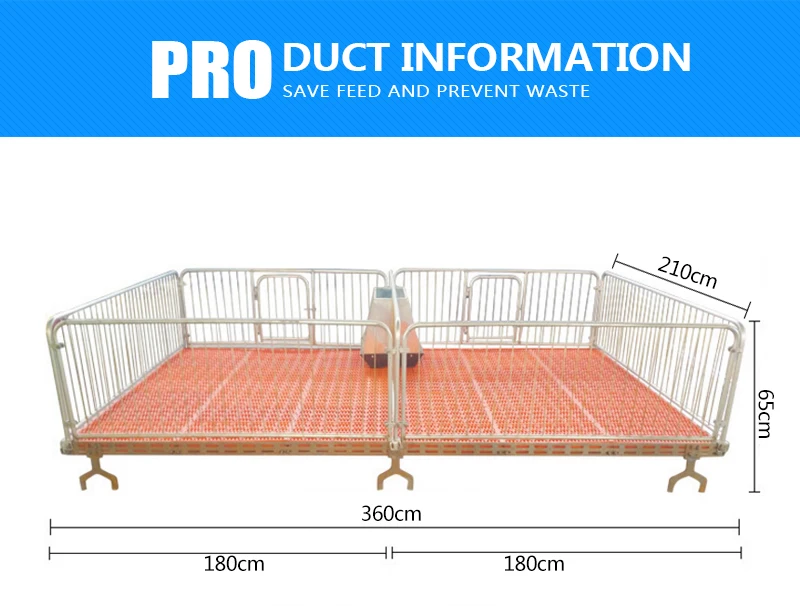broiler rearing cage
Sep . 14, 2024 09:32 Back to list
broiler rearing cage
The Benefits of Broiler Rearing Cages
In the fast-paced world of poultry farming, the method of broiler rearing plays a crucial role in ensuring optimal growth and health of chickens. One of the increasingly adopted systems is the use of broiler rearing cages. This practice offers a number of advantages that contribute to the efficiency and sustainability of poultry production.
Space Utilization
One of the primary benefits of broiler rearing cages is the efficient use of space. Unlike traditional floor rearing systems where birds are spread across a large area, cages stack vertically, allowing farmers to raise more birds within the same footprint. This concentrated system not only maximizes land use but also simplifies management practices. Since the birds are housed in a more confined area, monitoring their health and well-being becomes significantly easier for farmers.
Improved Biosecurity
Cages also enhance biosecurity, which is vital in poultry farming. With birds separated from each other, the risk of disease transmission is minimized. This is particularly important as poultry diseases can spread rapidly in flocks, leading to devastating economic losses. In cage systems, any adverse health symptoms can be quickly detected and treated, preventing potential outbreaks. Furthermore, cleaning and disinfecting cages is simpler compared to larger, open spaces, leading to a healthier environment for the birds.
Enhanced Growth Rates
broiler rearing cage

The design of broiler cages promotes better growth rates in chickens. Raised off the floor, birds are less likely to engage in harmful behaviors such as pecking or bullying, which can occur in more crowded floor environments. The use of cages allows for a controlled environment where temperature, humidity, and lighting can be optimized for the comfort of the birds, leading to faster weight gain and better feed conversion ratios. This ultimately results in higher profitability for farmers.
Feeding Efficiency
Feeding practices also see significant improvements with broiler rearing cages. With birds confined to a smaller area, feed can be delivered in a more targeted manner. Automated feeding systems are often used in conjunction with cages to ensure that all birds receive adequate nutrition without waste. This attention to feeding efficiency minimizes costs while maximizing growth potential, making the operation more economically viable.
Welfare Considerations
While some argue that caged systems may compromise animal welfare, modern cage designs have evolved to prioritize the needs of the birds. Enriched cages provide more space, along with structures for perching and nesting, allowing for natural behaviors. The increasing awareness and demand for higher welfare standards are leading to continuous improvements in cage systems, ensuring that animal welfare is not compromised.
Conclusion
In conclusion, broiler rearing cages present a range of benefits that make them a worthy consideration for poultry farmers. From space utilization and improved biosecurity to enhanced growth rates and feeding efficiency, the advantages are compelling. As the poultry industry continues to evolve, the focus on innovative and sustainable farming practices will likely make broiler rearing cages an integral part of the future landscape of poultry production. By investing in this system, farmers can not only improve their operational efficiency but also contribute to the responsible care and management of their livestock.
-
Automatic Feeding Line System-Pan Feeder Nipple Drinker|Anping County Yize Metal Products Co., Ltd.
NewsJul.29,2025
-
Hot Sale 24 & 18 Door Rabbit Cages - Premium Breeding Solutions
NewsJul.25,2025
-
Automatic Feeding Line System Pan Feeder Nipple Drinker - Anping County Yize Metal Products Co., Ltd.
NewsJul.21,2025
-
Automatic Feeding Line System Pan Feeder Nipple Drinker - Anping County Yize Metal Products Co., Ltd.
NewsJul.21,2025
-
Automatic Feeding Line System - Anping Yize | Precision & Nipple
NewsJul.21,2025
-
Automatic Feeding Line System - Anping Yize | Precision & Nipple
NewsJul.21,2025






